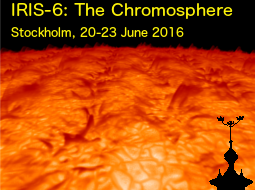Speaker
L. Kleint
Description
The Mg II h & k lines are useful diagnostics for physical processes in the solar
chromosphere. A long-standing question is how their central reversals in the line
cores disappear and turn into emission during flares. To address this question, we
carried out a joint observational and modeling study of the well-observed X1.0 flare
on 2014 March 29. We analyzed the Mg II h & k spectra observed by IRIS. We then
constructed a multi-threaded flare loop model and used the time-dependent electron
flux inferred from the RHESSI hard X-ray data as the input to the radiative
hydrodynamic code RADYN to simulate the atmospheric response. From the simulation
result, we synthesized the Mg II h & k intensity using the RH code and compared them
with the IRIS observations, where we found a general agreement. In particular, we
successfully produced the single-peaked Mg II h & k line profiles by increasing
electron density in the upper chromosphere within a narrow height range of ≈ 800 km
below the transition region. To our knowledge, this is the first successful attempt
in reproducing such line-profile shapes under flaring conditions. We will discuss the
implications of this result for diagnosing atmospheric dynamics and energy transport
in solar flares.
Primary author
Fatima Rubio da Costa
(Stanford University)

